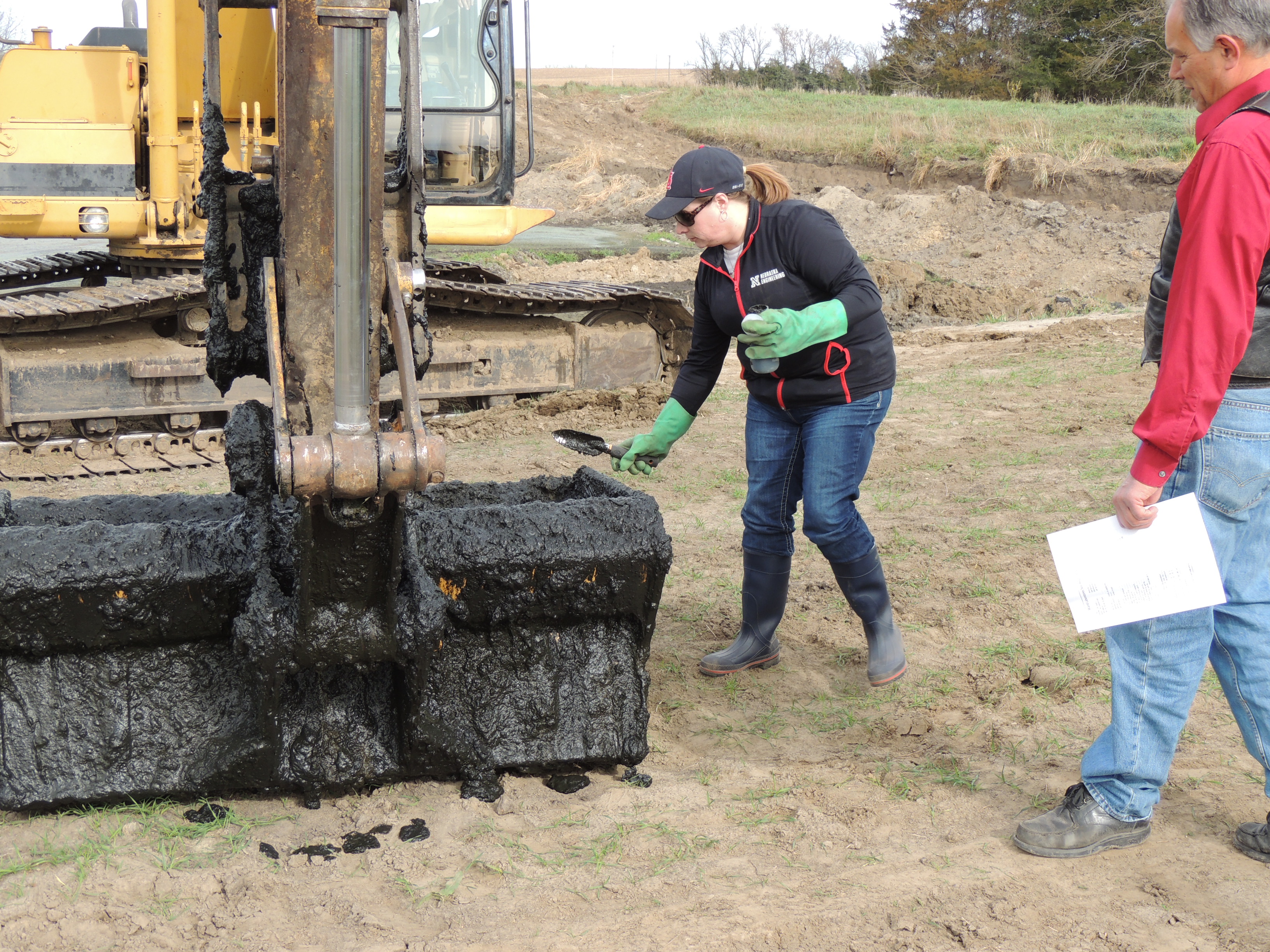Abandoned swine lagoons and earthen storage basins may contain valuable nutrients

When a swine lagoon is abandoned, the owner has the choice of decommissioning the lagoon or maintaining the integrity of the lagoon. Decommissioning means dewatering the lagoon and land applying the sludge at the bottom. One cannot just fill in the hole. The process of removing the water and the sludge is time consuming and takes resources and planning to complete properly. One aspect of the process does have some cost recovery and that is utilizing the sludge in a beneficial way. Sludge management is very similar to manure management in the principles related to its use. The major difference is there is a much smaller literature on the content of the sludge and how quickly it releases its nutrients, most specifically nitrogen once land applied.
At the Haskell Agricultural Lab (HAL), part of the University of Nebraska network of research facilities, the swine lagoon is in the process of being decommissioned. The analysis of the sludge provides an example of what may be found and how to develop a plan to use it. As is visible in the chart to the right, the characteristics of the HAL sludge is that it has greater organic N than typical swine slurry (38 lbs/1000 gal vs 11 lbs/1000 gal); greater phosphorus (89 lbs P2O5/1000 gal vs. 34 lbs P2O5/1000 gal); and less potassium (8 lbs K2O/1000 gal vs 24 lbs K2O/1000 gal).
Any analysis and comparison requires many assumptions. However, if one is consistent, then comparisons can be made and relative impacts can be assessed, even if the exact outcomes are not precise. In the analysis summary that follows, I compared applying to a low nutrient content field, crop removal and applying on an N basis, and crop removal on a P basis, and accounting for only the N since the field was adequately supplied with other nutrients. The quantity applied and the economic value is shown in the table below. The most value per acre is when the sludge is applied to cover all the deficient nutrients, but the application rate per acre is the greatest for this method. By volume, the strategy that makes the sludge the most valuable is applying to satisfy the phosphorus needs. This also is the least volume per acre and means that about 4 times the acres are needed to empty the sludge when compared the other options.
| One application, four year economic impact | Low nutrient soil levels | Crop Removal N basis | Crop Removal P basis | Actual soil test value UNL recs |
|---|---|---|---|---|
| Total Value/acre | $473 | $263 | $165 | $167 |
| Value/1000 gallons | $35.59 | $25.52 | $59 | $15.97 |
| Rate in 1000 gals/acre | 13.3 | 10.3 | 2.8 | 10.5 |
To develop a plan for a specific lagoon closure, sludge and effluent samples need to be taken since it is very unlikely that using published values will be similar to what is in your storage.
This article was reviewed by Leslie Johnson
Sign up for updates from UNL Water
